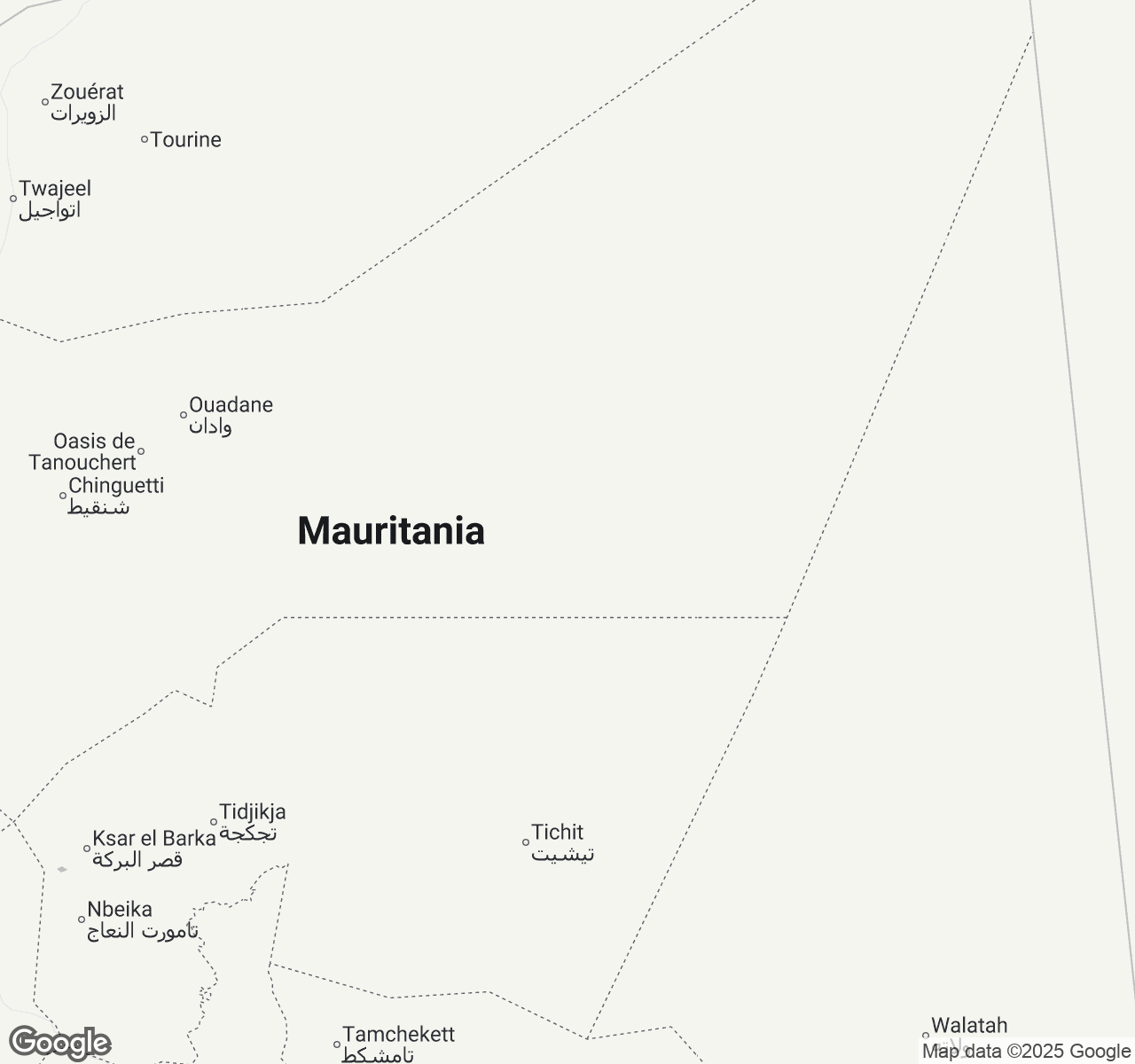
Things to Do in Mauritania
Discover the best of Mauritania
Plan Your Trip
Essential guides for timing and budgeting
Top Things to Do in Mauritania
Discover the best activities and experiences. Book now with our trusted partners and enjoy hassle-free adventures.
Your Guide to Mauritania
About Mauritania
Mauritania beckons like a whispered secret from the heart of the Sahara, where endless golden dunes meet the Atlantic's azure embrace. This is Africa's last frontier, a land where time moves with the rhythm of camel caravans and ancient trade routes still pulse with life. In the imperial city of Chinguetti, medieval libraries hold manuscripts that predate European printing, their pages whispering tales of scholarly brilliance that once illuminated the Islamic world. The Banc d'Arguin's pristine waters teem with millions of migratory birds, creating a symphony of wings against desert silence. Here, Moorish hospitality flows as freely as mint tea, and nomadic traditions paint daily life in rich cultural hues. Mauritania offers the rare gift of authentic discovery – where you can sleep under star-drunk skies, trace the footsteps of salt merchants, and witness a civilization that has thrived in harmony with one of Earth's most challenging landscapes for millennia.
Travel Tips
Transportation: Rent a 4WD vehicle with GPS and spare tires for desert travel. Public transport operates mainly between major cities via bush taxis (sept-places). Book internal flights through Mauritania Airlines for longer distances. Always travel with a local guide in remote areas.
Money: Bring euros or US dollars to exchange for Mauritanian ouguiya (MRU). ATMs are scarce outside Nouakchott and Nouadhibou. Credit cards rarely accepted. Budget 30-50 euros daily for mid-range travel including accommodation, meals, and local transport.
Cultural Respect: Dress modestly covering shoulders and knees. Remove shoes when entering homes or mosques. Use right hand for eating and greetings. During Ramadan, avoid eating/drinking publicly during daylight. Photography requires permission, especially of people.
Food Safety: Stick to bottled water and avoid ice. Eat at busy local restaurants where food turns over quickly. Try national dishes like thieboudienne (fish and rice) and mechoui (roasted lamb). Street food is generally safe in cities during peak hours.
When to Visit
Mauritania's prime season runs November through March (18-28°C/64-82°F) with minimal rainfall (<5mm monthly) and pleasant desert nights. This peak period sees hotel prices increase 40-60%, especially during December holidays. The shoulder seasons of October and April offer good weather (22-32°C/72-90°F) with 20-30% lower accommodation costs, though April brings occasional sandstorms. May through September constitutes the harsh hot season (35-45°C/95-113°F) with the brief rainy season (June-September) bringing 50-200mm annual precipitation, primarily in the south. Budget travelers benefit from 50-70% lower prices during summer, but extreme heat limits outdoor activities. Key festivals include Eid al-Fitr (dates vary with lunar calendar), typically March-May, and the Nouakchott International Festival of Ancient Music (February). Cultural enthusiasts should visit during cooler months to fully explore desert sites like Chinguetti and Ouadane. Birdwatchers should target November-April when millions of migratory species inhabit Banc d'Arguin National Park. Adventure travelers comfortable with heat can explore during shoulder seasons for fewer crowds and real feels, though adequate water supplies and sun protection are essential year-round.

Mauritania location map